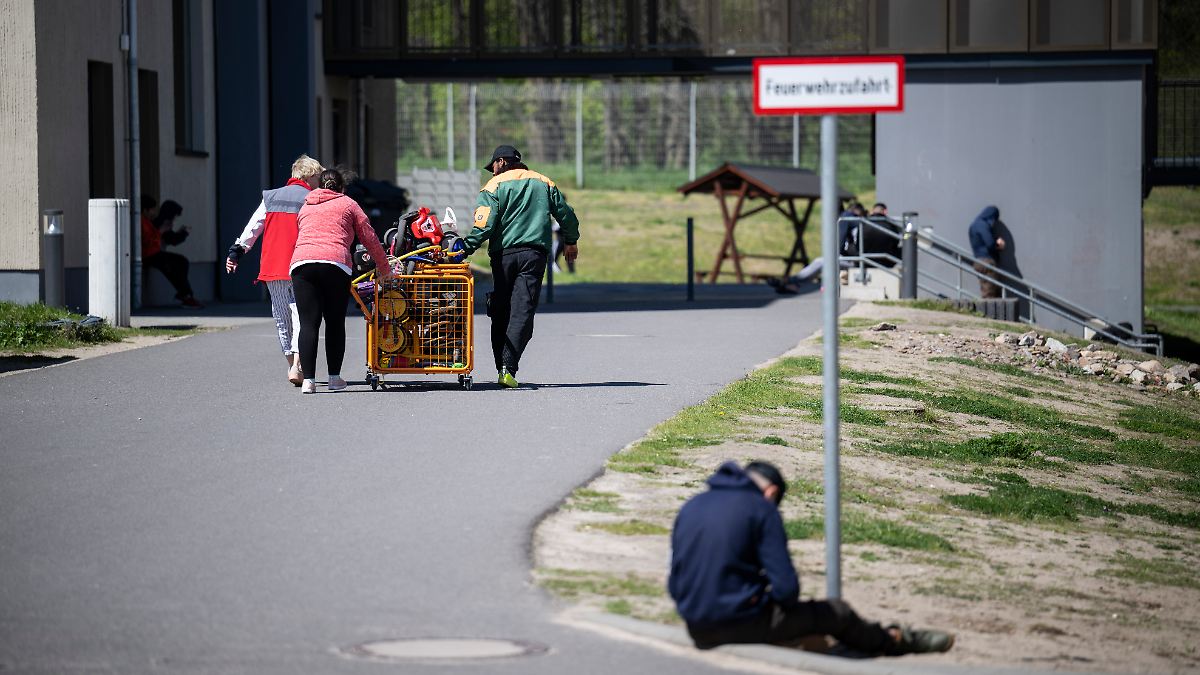“Consequence of hybrid warfare”
Russia is probably deliberately smuggling asylum seekers into Europe
This audio version was artificially generated. More info | Send feedback
Every day 100 refugees reach Eisenhüttenstadt on the Polish border. According to authorities, half of the people now come via Moscow and Belarus. These are targeted maneuvers by Russia to destabilize Europe, says SPD parliamentary group leader Mützenich.
SPD parliamentary group leader Rolf Mützenich blames targeted maneuvers by Russia and Belarus for the sharp increase in the number of asylum applications in Germany. “We are experiencing a series of hybrid warfare on the part of Russia, in which refugees are being flown in and smuggled through directly from Syria and other crisis areas with the aim of destabilizing Europe,” Mützenich told the “Augsburger Allgemeine”.
The sharp increase in the number of asylum seekers entering Germany via the borders of Poland and the Czech Republic suggests that many refugees are deliberately being smuggled into the EU from Russia via Belarus via detours. “Of course these people are fleeing war and oppression, but Russia is shamelessly exploiting this situation,” said Mützenich.
Smugglers demand thousands of euros
100 people arrive at the initial reception center for refugees in Eisenhüttenstadt in Brandenburg every day, and the trend is rising. Their route to Germany takes them partly via the Balkan route, but now also increasingly via Russia and Belarus. Smugglers charge thousands of euros for the journey to Germany. “Around 100 people come here every day, seven days a week,” says Olaf Jansen, head of the immigration office in Eisenhüttenstadt, where up to 1,550 people can be accommodated in the initial reception facility. Jansen expects that there will soon be 120 a day.
In terms of capacity utilization, he now sees a situation similar to that at the time of the refugee crisis of 2015/2016, although refugees from Ukraine who can stay in Germany without applying for asylum are also included. At the same time, more than 220,000 asylum applications from other nationalities were registered across Germany from January to August. That's already more than in any year since 2016.
In Eisenhüttenstadt, half of the refugees come to Germany “via Moscow and Belarus,” says Jansen. “The other half via the so-called Balkan route, which now runs through Hungary and Slovakia and through Poland.” Smugglers charged people “3,000 to 15,000 dollars” (2,800 to 14,000 euros), “depending on how comfortable the trip is.”
Refugees are probably being exploited
Poland has actually been building a well-fortified border fence on the border with Belarus since 2021. Even back then, the EU accused Belarusian leader Alexander Lukashenko of deliberately wanting to trigger a refugee crisis in order to put Europeans under pressure. Thuringia's Interior Minister Georg Maier recently accused Russia and Belarus of exploiting refugees. Accordingly, Syrian refugees from Turkey are flown to Russia in an “organized manner” and then reach Germany via Belarus and Poland.
“We repeatedly have indications from individual refugees that they receive specific help in overcoming the relatively well-developed Polish-Belarusian border facilities,” says Jansen. For example, they were given ladders and equipment to cut holes in the fence.
In view of the increasing number of arrivals, Federal Interior Minister Nancy Faeser has now agreed to more joint controls with Poland and the Czech Republic in order to arrest smugglers. Jansen welcomes this: “Every smuggler who is caught means that he can no longer smuggle a few dozen people.”




